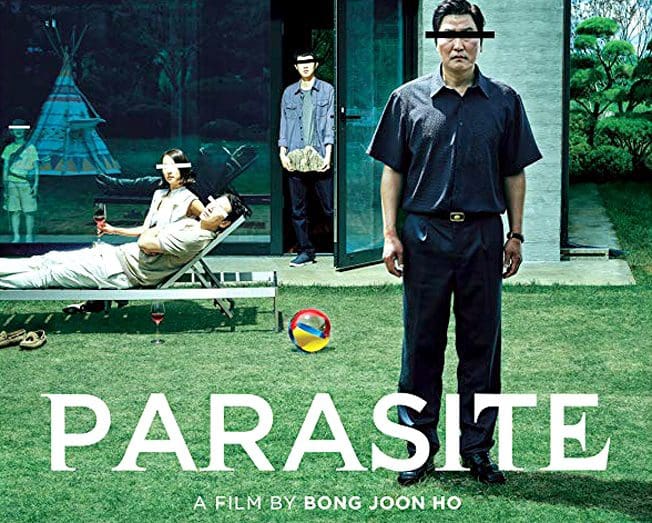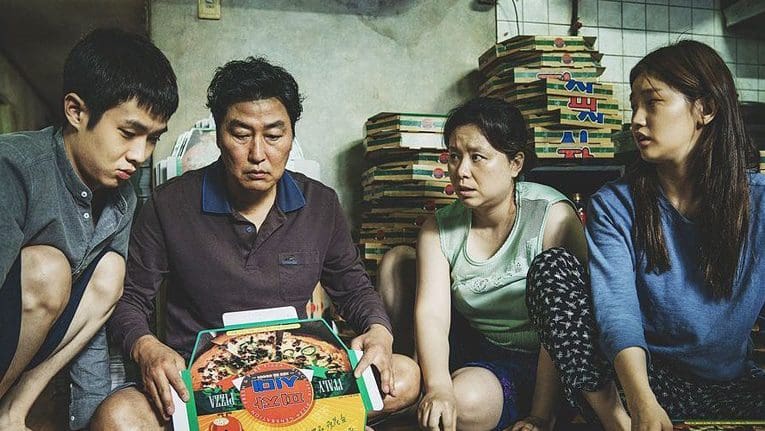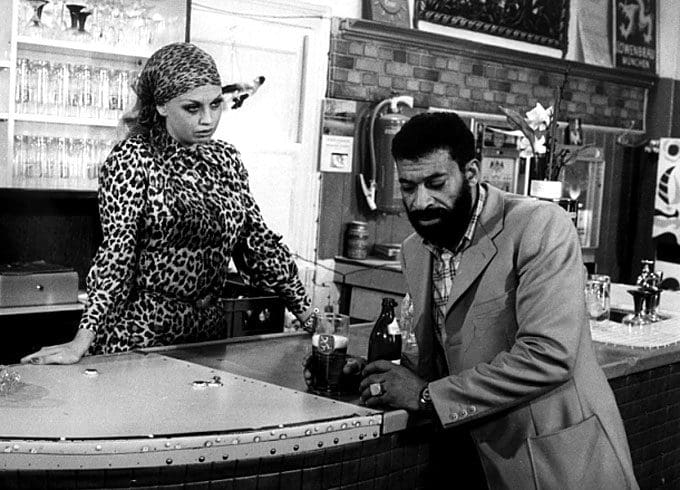words Alexa Wang
When Parasite won the Best Foreign Language Film award at the 2020 Golden Globes, director Bong Joon-ho used his speech to encourage the Western world to embrace movies made in different languages. “Once you overcome the one-inch-tall barrier of subtitles,” he insisted. “You will be introduced to so many more amazing films.” A month later, the South Korean filmmaker received Best Director and Best Original Screenplay Oscars, while Parasite made history as the first non-English language film to win the Best Picture Academy Award.
Beyond its exceptional cast and Bong’s electric screenplay and direction, a lesser-known figure also played a huge part in Parasite’s unprecedented success: Darcy Paquet, the film’s translator. Without his nuanced subtitles, international audiences may not have responded to the dark comedy thriller with such fervour.
Though Parasite’s triumph could help international pictures become a more mainstream part of Western cinema, there have been concerns that film studios are severely undervaluing the role that translators play in the success of world cinema. Cultural critic Kim Heon-sik warned The Korea Herald that “most filmmakers don’t share a general standard in employing translators” even though subtitles are “the start and essence of making Korean films known in other countries”.
Of course, this problem isn’t exclusive to Korean cinema. When subtitles are the “one-inch-tall barrier” which determines whether a film connects or falls flat with international audiences, only the highest-quality translations will give movies the chance to follow in Parasite’s footsteps. Studios certainly shouldn’t cut corners on this essential process, and subtitling should always be left to the professionals.

Context and nuance is everything
Another non-English language Oscar Best Picture contender was Roma, directed by Mexican filmmaker Alfonso Cuarón and released on Netflix in December 2018. Though it lost out to Green Book at the 2019 Academy Awards, the movie received universal critical acclaim and won numerous accolades elsewhere. However, though the film itself was immensely popular, Netflix was criticised by members of the ATAA (the French Association of Audio-visual Translators) over Roma’s French and English subtitles.
One example highlighted in both cases involves a scene where a woman addresses a bloodied man dying in the street. The subtitlers translated the original Spanish word “vamos” as “let’s go” (or “partons d’ici” in French), which the ATAA deemed absurd, given that the man clearly could not go anywhere. As the woman is desperately encouraging him to wake him, “come on” would have been a more logical translation, retaining the emotional depth of the exchange.
Though overlooking context in this way isn’t ideal, Ian Burley, chairperson of the ATAA, insisted that it was still “possible to view and appreciate Roma with the English subtitles as they stand”. The organisation’s vice president Sylvestre Meininger, on the other hand, was less charitable, noticing “spelling mistakes, grammar errors, improper usage, barbarisms, sentences that mean nothing and mistranslations”. He had no doubt that Netflix had failed to hire a professional audiovisual translator for the film, and questioned whether Cuarón knew that his film had “probably been butchered on a worldwide scale”.
Error-laden subtitles clearly prevent audiences from getting to the heart of a film, so it’s completely fair for Meininger to ask: “[Why] make prestigious directors accessible to wide audiences worth if the translation impairs understanding of the dialogue or turns drama into comedy?”
Creating subtitles isn’t just about finding the right words
Language fluency alone is not enough to guarantee quality subtitles — the practice is much more technical than average moviegoers may realise. For example, linguists at London Translations offer a subtitling service that accurately synchronises the words with the video, ensuring that sentences are of an appropriate length order to aid easy reading at a convenient speed. Asking a native Portuguese speaker to translate a film could certainly produce word-perfect subtitles. However, only a professional translator can make the language seamlessly flow with the video, and allow Portuguese viewers to appreciate a movie as much as everyone else.
Those reluctant to engage with subtitled films often believe that having to read the on-screen words will distract them from the on-screen action. And, in fact, there is some scientific truth to these apprehensions. Academics speaking to The New York Times said that viewers need to use other parts of their brains when reading subtitles to simultaneously process “what the words are and how they are ordered” on top of understanding the emotional tone of the dialogue.
Naturally, subtitlers need to make all of this material as easy to understand as possible, otherwise the film won’t be as enjoyable for audiences. Therefore, professional translators must be able to clearly express which character is speaking, ensure that words are on screen for an adequate amount of time, and include logical line breaks and appropriate punctuation.

Subtitlers are “adapters, rather than translators”
As different languages have varying word lengths, translating an English film word-for-word into French, German or Greek would require a lot more space. Consequently, professional translators often need to work out how to shorten the subtitles to meet these time and space limitations, while still conveying the correct meaning, context and emotion. This is why early Hollywood translator Herman G. Weinberg, who translated over 300 films, described himself and his assistants as “adapters, rather than translators” when profiled by The New Yorker in 1947. “We try not to lose any wisecracks, even if it means stepping up the pace, because an American will hear a couple of Frenchmen in the audience howl at a joke in French and it burns him up not to be in on it.”
To make things even more complicated, there are often phrases and expressions that have no direct translation between languages, or are so culture-specific as to require too much explanation. For example, in Parasite, Darcy Paquet made a very creative decision when it came to expressing the word ‘jjapaguri’, a dish made from two Korean instant noodle brands, Jjapaghetti and Noguri. “I considered simply writing ‘jjapaguri’ in the subtitles, but since this word has no meaning for international viewers, in the end I decided to make a new word ‘ram-don’ by combining ramen and udon,” he explained to the Bangkok Post. “Then when the noodle packages appear on the screen, we wrote ‘ramen’ and ‘udon’ above each package.”
Finally, the subtitles must serve the film by reflecting characters’ ages, social classes and personalities, as well as a film’s historical period, and simply driving the plot forward. For instance, even with the limited space, a translator could not cut any dialogue which is crucial to events that occur later in the film. “The screenwriter has engineered all sorts of implications and resonances that work at a deeper level,” freelance translator David Buchanan explained to The Guardian. “So a subtitler needs to be aware of the film’s underlying themes, symbolism, stakes and so on.” Buchanan admits to watching a film at least three times before he begins to translate it, in order to “empathise with every single character”, and put across what they’re saying as accurately as possible.
Given how intricate and valuable the subtitling process is, professional translators are crucial to how a film performs overseas. If Parasite’s success does encourage a growing interest in international cinema in the West, translators must play a pivotal role.









